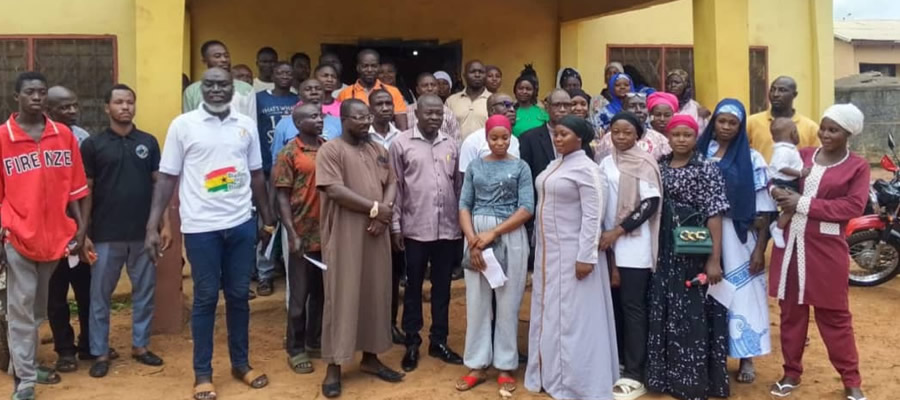

In l996 there were 127 Primary Schools, 35 Junior Secondary Schools and 2 Senior Secondary Schools in the District. Well-established pre-schools were few. Currently there are 24 Pre schools established, 64 primary schools, 15 Junior Secondary Schools, 1 Senior Secondary School and 1 Vocational institution. The total number of established Basic Schools is 103.
Through the efforts of CRS, DFID, CAMFED and other NGOs and Donors, about 15 communities have constructed swish buildings for schools. In 2000-2001, the district benefited from four 6 classroom blocks and fourteen teacher’s quarters under the Basic Sector Improvement Project. (BESIP the Primary Education rehabilitation Programme (PERP) rehabilitated 11 schools and constructed 11 others. The EU Micro Programme assisted in the provision of eight 3-classroom blocks and the District Assembly constructed 16 schools. There are 17 Head teacher’s bungalows, 15 teacher bungalows and 32 schools KVIP.
The above efforts and others have improved the state of educational infrastructure of the district over the past six years. Much need to be done to bring the situation to acceptable level. Seventeen (17) school buildings need urgent rehabilitation works while twenty-eight (28) schools need new classroom blocks.
Gross primary school enrollment rate is 69%. Out of 18,370 children of school going age 12,797 are currently in school. Gross enrollment rate for girls of school going age is 61%. 5,740 girls out of 9,207 girls of school going age attend school.
Percentage increase in enrollment for the year 2002 to 2005 is – 6.4% and 13.5% for boys and girls respectively. The overall percentage increase in enrollment is 9.95%. Considering enrollment figures from the education office, dropout rate among girl child is higher (13.5%) than boys (6.37%) overall drop out late is 9.65%. There are 372 teachers in the district. Of this 259 are male and 93 are female, 60.48% of the teachers are trained. The current pupil teacher ratio is 55:1
Furniture as well as other teaching and learning materials are lacking in most of the schools. The contributions of DFID and the District Assembly through the MP’s Common Fund have contributed in no small way to save the situation of lack of furniture for school children. 8,367 dual desks, 401 teachers table and chairs and 151 classroom cupboards are required for attainment of sufficiency.
Limited means of transport has hindered supervisory work of the Directorate, 8 motor cycles are currently available for the 11 circuits supervisors and 3 more is required. 72 SMCs are formed in a number of communities in the District. Sensitisation on formation of SMCs and PTAs is being carried out 41 of the 72 SMCS, formed are active and contributing effectively towards educational development in their respective localities. The DEPT is also functional and has sensitised school SMCS and PTAs, but the DEPT needs to intensify its activities.
Skills and Entrepreneurial Dev"t for the Youth
Vocational and technical training is lacking in the District. The District Assembly in collaboration with the National Youth Council have established a career and skills Development centres in the District. Training of the youth in carpentry, Batik, and weaving and other vocational skills is being carried out.
Date Created : 11/18/2017 4:31:33 AM









 facebook
facebook
 twitter
twitter
 Youtube
Youtube
 +233 593 831 280
+233 593 831 280 0800 430 430
0800 430 430 GPS: GE-231-4383
GPS: GE-231-4383 info@ghanadistricts.com
info@ghanadistricts.com Box GP1044, Accra, Ghana
Box GP1044, Accra, Ghana